|
|
|

Ubelmannia flavispina
Although the juveniles are quite different, the adult form is
very close in appearance to U. pectinifera.
|
|
Description: Solitary beautiful globular
cactus, having green stems with several ribs and closely-spaced areoles.
Stem: Up to 12 cm wide, 35 cm tall, very woolly in the apex.
Plants in this genus always show woodiness in the lower stem as they
age.
Ribs: 20 to 29 prominent
Areoles: Close set.
Central spines: 1 to 4 up to long 1.5 cm.
Flowers: Yellow and diurnal in late autumn, or spring.
Remarks: The Uebelmannia flavispina and all the
other plants belonging to the Uebelmannia pectinifera complex
are very variable in habitat,
it has three recognized
subspecies, but a
multitude of different forms exist, where each form is linked to others
by populations of plants with intermediate characteristics.
-
subsp. pectinifera:
It has about 18 ribs and slowly grow up to 50 cm in height. Origin: It
comes from the mountains in the higher part of the areal.
-
subsp.
flavispina: It has up to 29 ribs and can grow about 35 cm
tall. Origin: west of Diamantina.
-
subsp. horrida:
Stem with more than 23 ribs (up to 40) it is the taller of the three
and can reach 1 m of height. Origin: Serra do Espihašo.
|
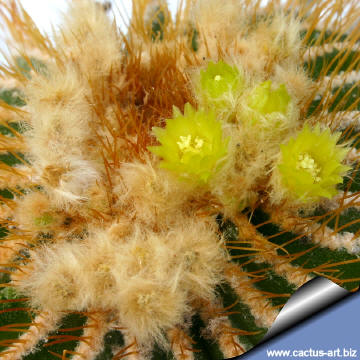 |
 |
.
|
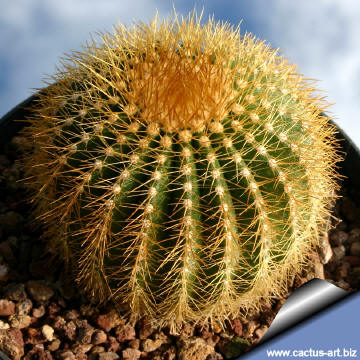 |
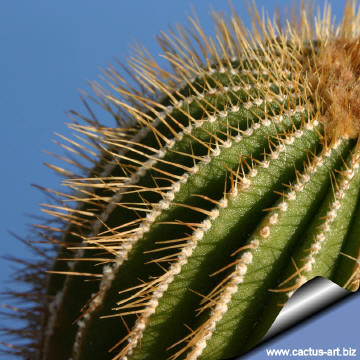 |
.
|
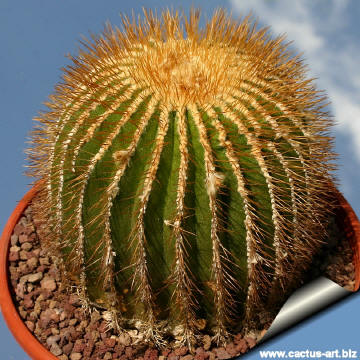 |
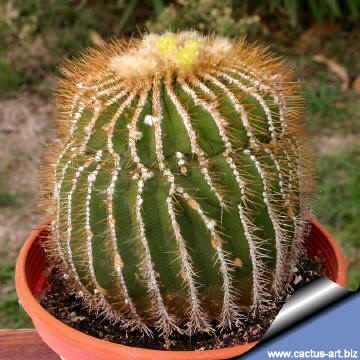 |
.
|
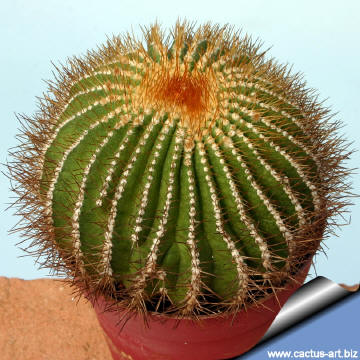 |
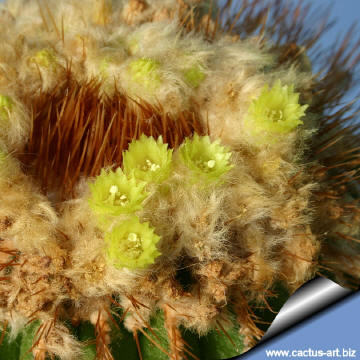 |
|
Advertising
|
|
|
|
|
|
|
Family:
Cactaceae (Cactus
Family)
Scientific name: Uebelmannia
flavispina Buining & Brederoo
Place of publication: Succulenta (Netherlands) 52:9.
1973
Origin: Brazil (Minas Gerais: Diamantina)
Conservation status: Listed in
CITES appendix 1.
Etymology: The subspecies name flavispina comes from the
Latin for "yellow spines".
Synonyms:
- Uebelmannia pectinifera subsp. flavispina
(Buining & Brederoo) P. J. Braun & Esteves
Place of publication: Succulenta (Netherlands) 74:135. 1995
|
|
|
|
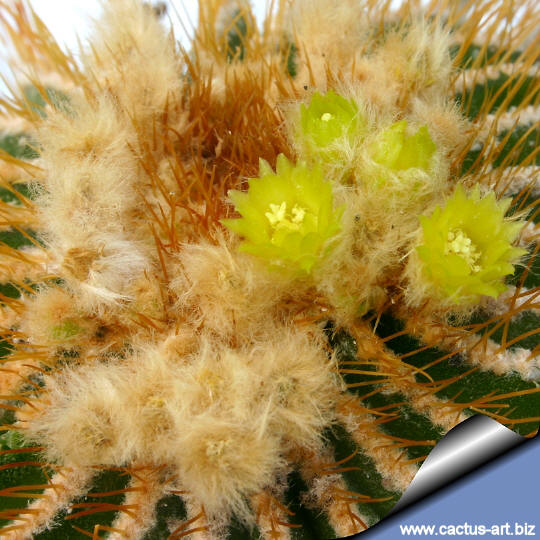
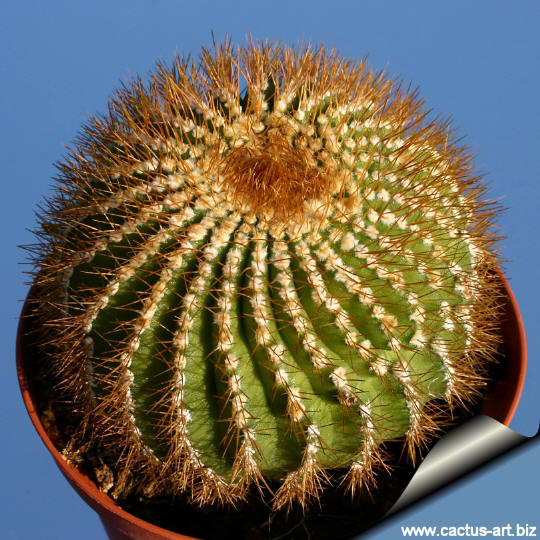

Uebelmannia flavispina/pectinifera intermediate.
This specimen shows a transition from the yellow basal
(juvenile) spines to the black ones on the upper part of the plant.
Cultivation: Not easy; it has a large root and
lives among rocks. This tropical cactus prefers loves warm, moist, humid
conditions, and mist spraying is a must in summer. Water regularly
during the growing season and use a very draining mineral potting
substrate. At the onset of winter, do not water. Uebelmannias need heat
all year round, and extra winter heat; minimum 10░C is best. Avoid any
frost. Keep cool in summer. This plant proves to be root prone if kept
too cold in winter. To help stop this, a good deep collar of pumice or
lava grit is an excellent idea. It prefers a full sun position and
possibly afternoon shade in summer. If you can place it so that this
occurs, the plant will be much happier.
Propagation: By seeds. Germinating seeds can also be tricky. But
plants are often grafted making them easier to grow, particularly
through the winter. If possible, using a rootstock that is hardier than
the Uebelmannia is the ideal.
Photo of conspecific
taxa, varieties, forms and cultivars of
plants belonging to the Uebelmannia
pectinifera
complex
(This
Taxon has lots of synonyms ( like
many other cacti) with several controversial
varieties and subspecies, and comprises a
multitude of different forms, but where each form is linked to others by
populations of plants with intermediate characteristics):
|
|